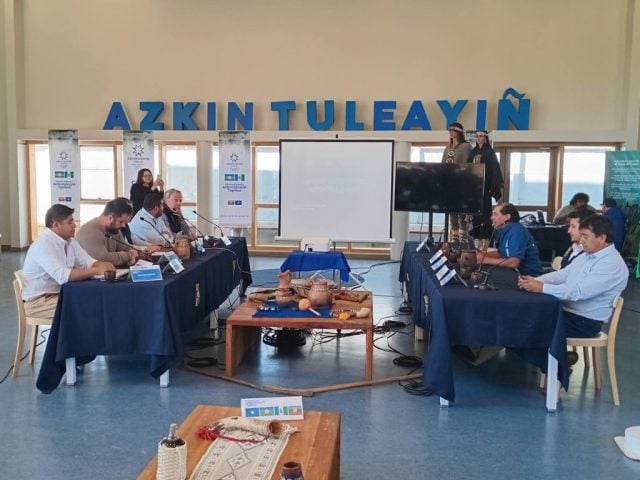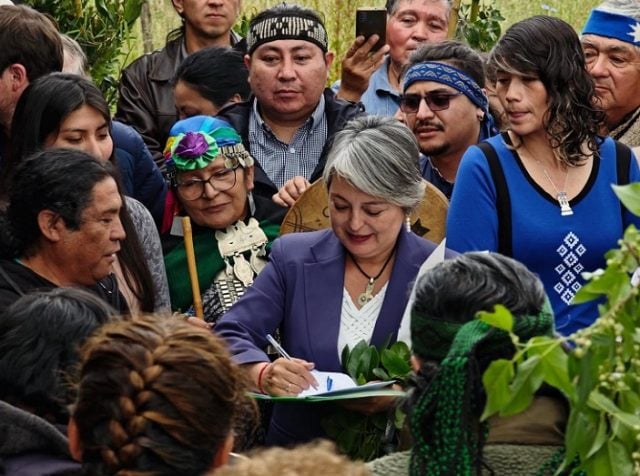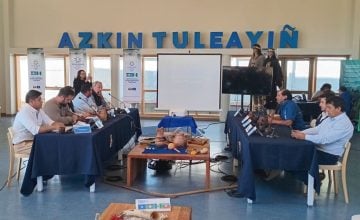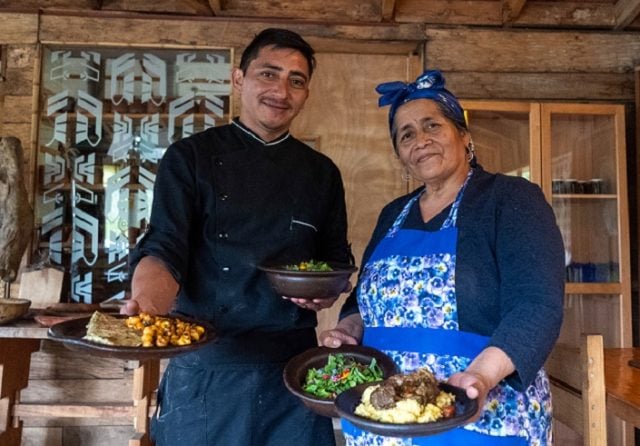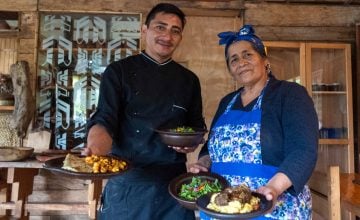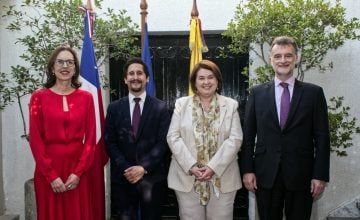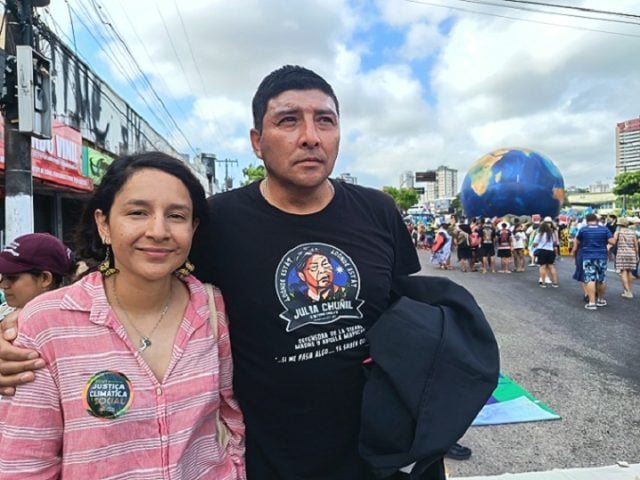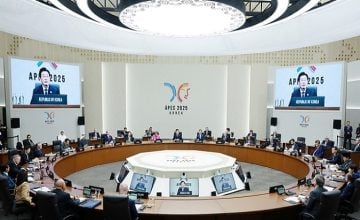Original article: Cumbre Económica Mapuche: Azkintuleayiñ 2025 define ruta para un desarrollo con identidad
By Raigan Nawel
For the Chilean state, Cabrero is the heart of its territory; for the Mapuche Nation, it serves as a meeting point between two peoples that sealed peace and coexistence through the Treaty of Tapihue in 1825.
On this very land, where Mapuche and Chilean authorities once gathered to resolve a conflict inherited from the war with Spain, the inaugural Mapuche Economic Summit Azkintuleayiñ 2025 was held. This event was convened to define the future of the economy in Mapuche territory.
A Dialogue to Overcome Poverty and Manage Resources
The gathering brought together representatives from communities, leaders, entrepreneurs, and academics who reflected on strategies to eliminate poverty, manage wealth, foster peace, and promote cooperation as guiding principles for an identity-driven economy.
«Azkintuleayiñ—looking ahead» encourages us to see ourselves as a people and to view our territory with shared responsibility,» was highlighted at the opening.
Inaugural Session: A Focus on Coexistence and Development
The session was inaugurated by Cabrero’s mayor, Yusef Sabag Araneda, who acknowledged the historical and political significance of this gathering:
«Cabrero is a land of work, coexistence among cultures. Territories prosper when people meet, share knowledge, and collectively envision their development. This summit is an opportunity to define, from a Mapuche perspective, the economic path to the future.»
During the summit, research and proposals from Mapuche organizations were presented, converging on the idea of a territorial economy capable of protecting resources, redistributing wealth, and supporting political and cultural autonomy.
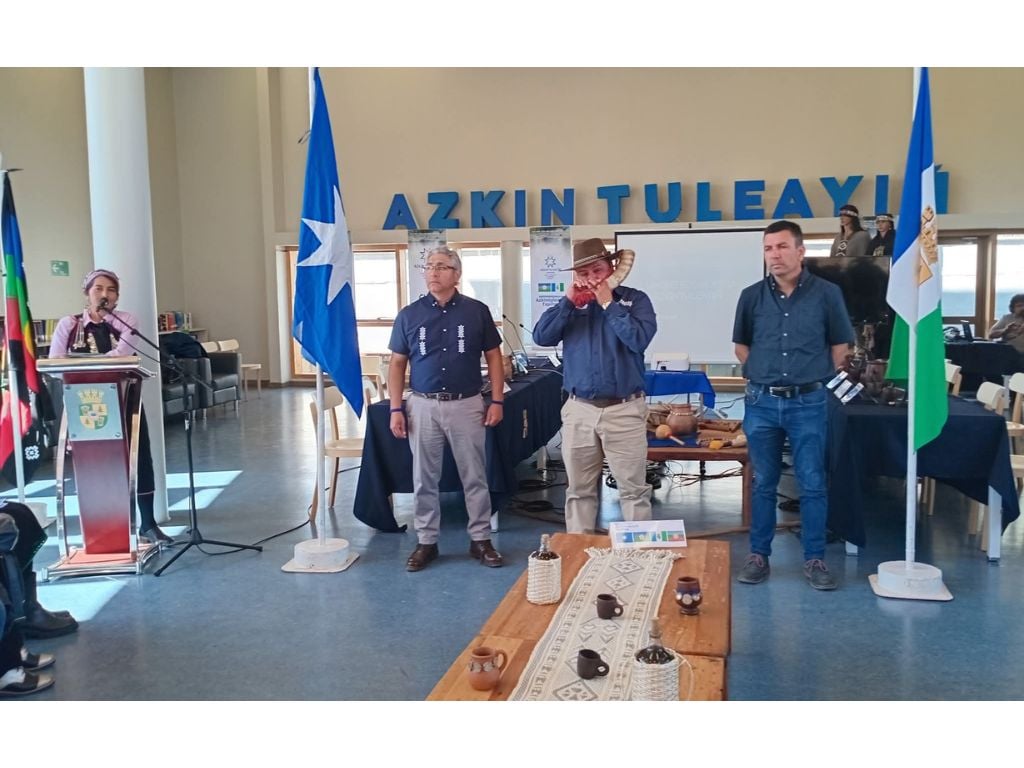
Proposals for a New Mapuche Economic Model
Entrepreneur Jaime Huenchuñir proposed the creation of a Mapuche Free Trade Zone (ZOFRAMA) as a tool for investment and territorial capitalization:
“Without capitalization, there is neither political power nor territorial control. The best antidote to poverty is the generation of wealth. This is the moment to build Mapuche economic power.”
Academic Jonathan Rodríguez emphasized the urgency of strengthening digital capabilities:
“We must master contemporary tools. Knowing how to use Google, Meta, or TikTok is also defending culture; it’s bringing it to the market intelligently and with dignity.”
From his entrepreneurial experience, Francisco Huaracán reinforced the value of financial education and discipline:
“Poverty is not just a lack of money; it’s also a lack of information. Any peñi or lamngen can succeed if they access knowledge and dare to invest responsibly.”
Ariel Traipi concluded the conference cycle with a call for ethical and cultural coherence:
“We can take on the world if we act from our principles. Our symbols, names, and products hold value, and we must defend them to strengthen our Mapuche economy.”
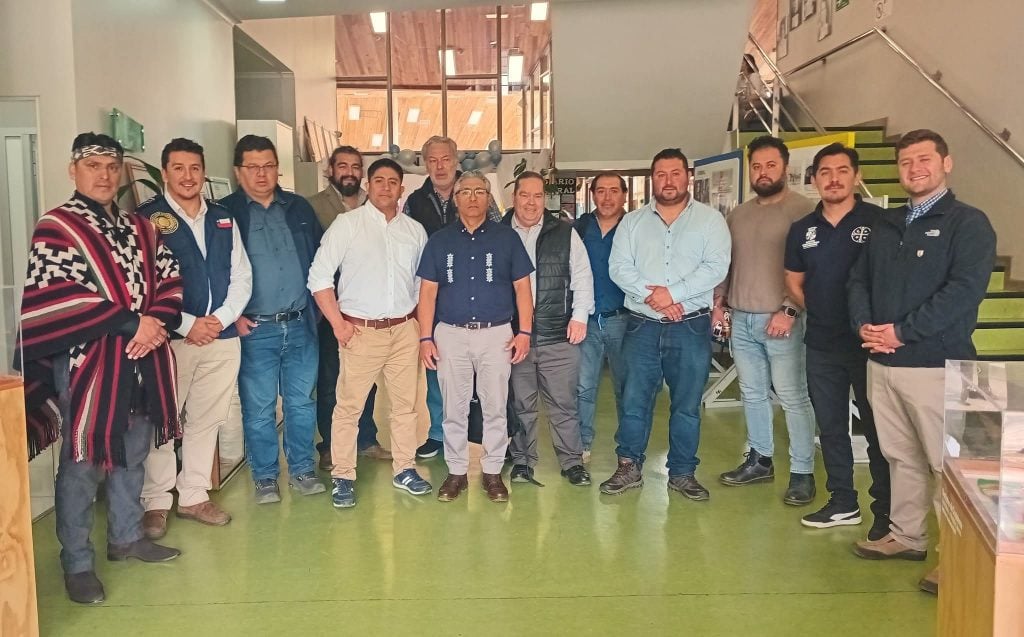
Development with Identity and Coexistence
Javier Ruiz, president of the Summit, emphasized that this inaugural event marks the beginning of a historical process for economic realignment from a Mapuche perspective:
“This summit is the first step to organizing the economy based on our worldview. May the economy unite us, serving to strengthen our autonomy and the well-being of our territories. Azkintuleayiñ will continue its path with new working groups and a second summit in Mapuche territory.”
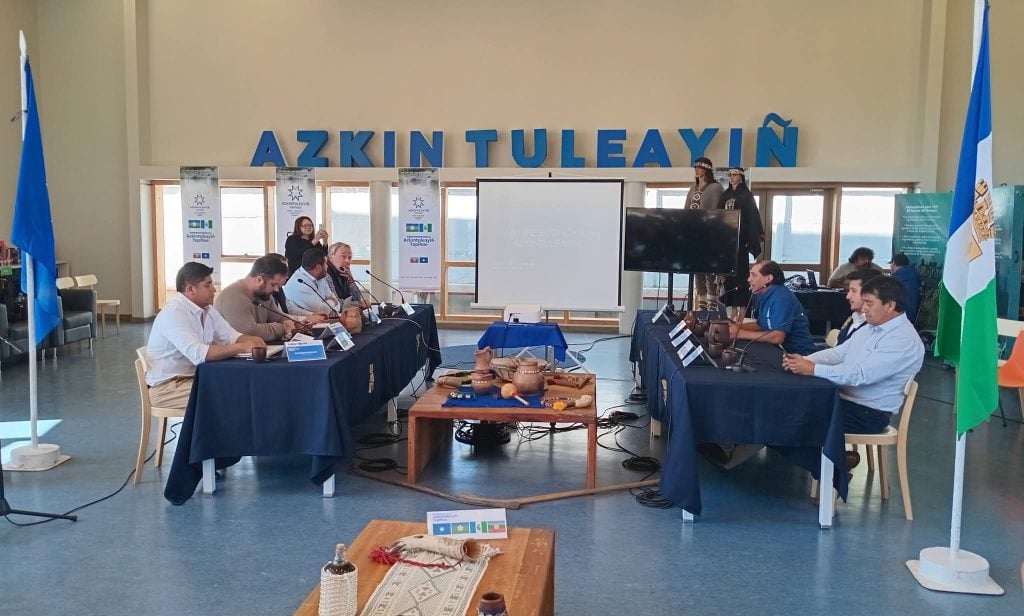
Legacy and Outlook
The Mapuche Economic Summit Azkintuleayiñ 2025 leaves a clear legacy: moving towards a development model rooted in identity, based on the principles of Itrofill Mongen, transparency, collective work, and the economic self-determination of the Mapuche people.
“Defining the direction of the economy in Mapuche territory means defining the future of Wallmapu.”
